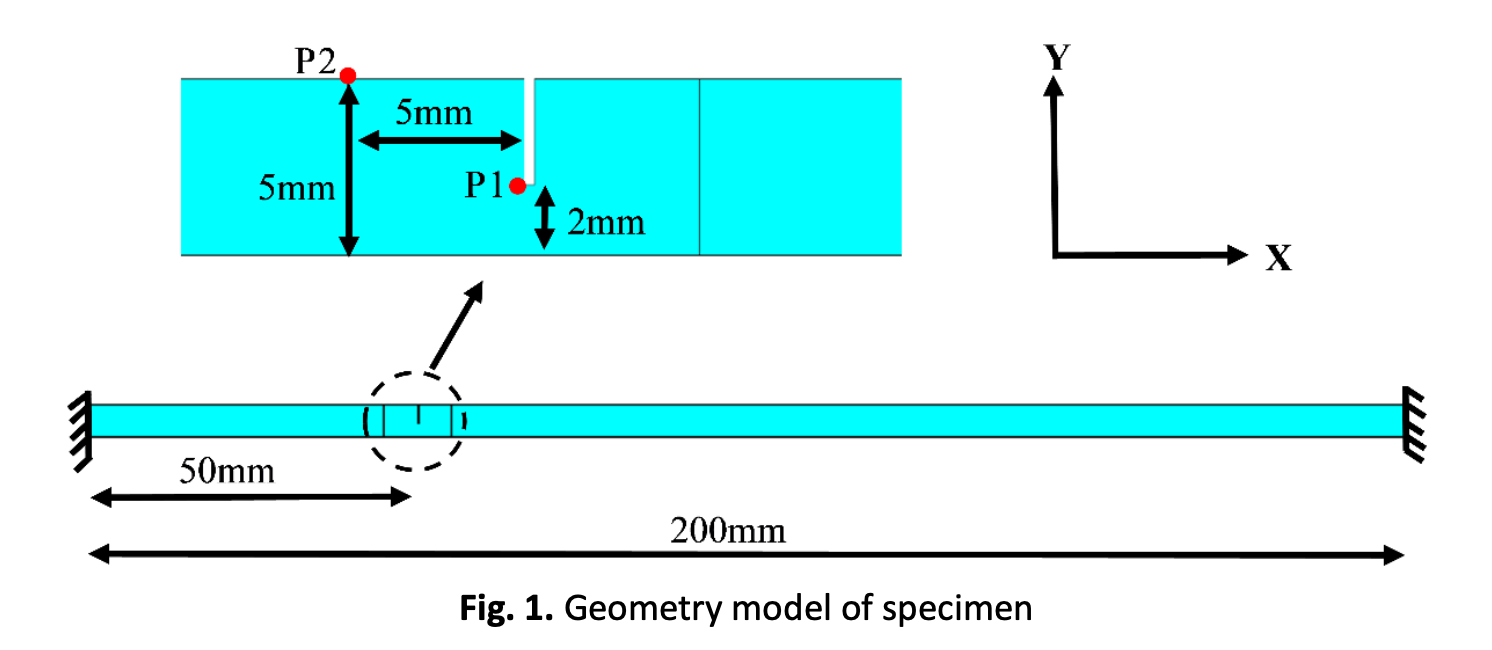FEM Modelling of the Heating Behaviour in Vibrothermography Based on Thermoelastic Damping on Crack Location
DOI:
https://doi.org/10.37934/arfmts.108.1.6674Keywords:
Thermoelastic damping, vibrothermography, surface crack, Non-destructive testing (NDT), aircraft material, vibrational frequencyAbstract
The paper aims to simulate the heat generation in crack location based on vibrothermography inspection. For this study, the thermoelastic damping effect was considered as the source of heat generation and the value of thermoelastic damping was determined. In simulation, the model of the specimen with crack was AL7075-T6. The vibrational frequencies were given at 20kHz, 24kHz and 28kHz, while the maximum amplitude was constant of 4.8nm. The results of temperature variation, stress, energy loss and heat flow rate on the crack location were obtained from the simulations which were performed by using ANSYS software. The ratio between power loss and heat flow rate was calculated and presented as the index for selecting the most suitable vibrational frequency in term of heat accumulation. The case study 20kHz was considered as the most suitable vibrational frequency for this study because the index ratio was higher than the case studies 24kHz, 28kHz at 6.29% and 9.14% respectively.
Downloads

































